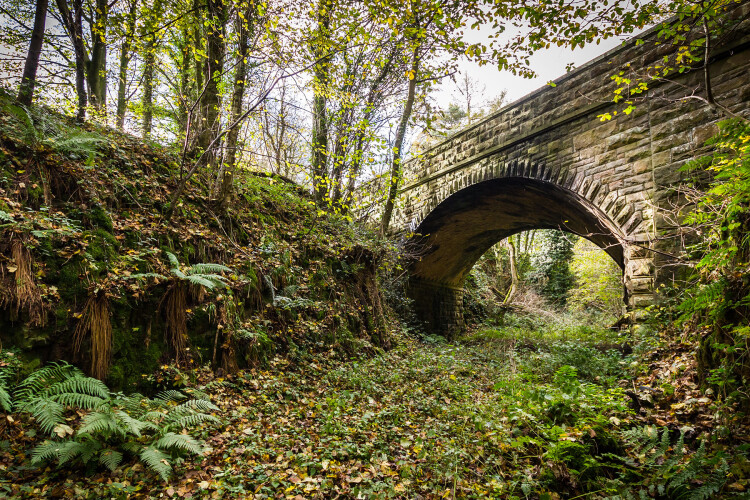The House of Commons transport select committee has written to transport minister Charlotte Vere and to Highways England urging a rethink on disused rail bridges, viaducts and tunnels.
The Department for Transport (DfT) gave responsibility for disused rail structures to Highways England in 2013, with a £10m annual budget to inspect and, where necessary repair around 3,200 assets. However, in a strategic report from 2016, Highways England set out its preference to “significantly reduce the level of liability and risk to the HE and DfT” through a move to demolition and infilling. The number of structures within the Historical Railways Estate would be reduced by 10-15% (320-480 structures), it said. To fund this work, the HRE budget is being quadrupled to a typical annual figure of £41m.
In January, it was revealed that 134 structures are going to be put beyond use over the next five years, with the possibility of 480 more to follow. [See previous report here.]
Campaigning against this is an organisation called The HRE Group – an alliance of engineers, cycling campaigners and greenway developers. They say that no assessment is being made as to the strategic value of the affected structures for future transport provision. It also accuses Highways England of avoiding scrutiny of the normal planning processes by using permitted development powers.
According to The HRE Group, around a third of the bridges earmarked for infilling are already proposed for reuse as part of reopened railways, heritage line extensions or footpaths and cycleways – or have identified potential to do so in the future.
HRE Group campaigners have secured the support of the transport select committee, a cross-party group of backbench MPs.
Transport committee chair Huw Merriman MP has written to roads minister (Baroness) Charlotte Vere, copying in Highways England’s acting chief executive, Nick Harris.
He writes: “We urge Highways England and the Department for Transport not to view the estate primarily as a risk to be minimised, but rather as assets to be preserved, repurposed for public benefit and enjoyed.
“Under its 2015 Protocol Agreement with the Department for Transport, Highways England’s role is to reduce the liabilities on the Secretary of State from individual structures within the estate. The estate is not only part of our national heritage, but includes many strategic assets with demonstrable public value. We would like to see the Protocol Agreement amended to reflect the cultural and strategic value of these historic structures.”
The letter continues: “We are concerned to hear about Highways England’s plans to infill or demolish parts of the estate. We have been informed that 130 bridges and tunnels will be demolished or infilled over the next five years. In addition, we understand that up to 15% of the estate (around 480 structures) is at risk of being demolished between now and 2029/30.
.png)
“Many of these historic structures already have an identified use and many more have clear potential to be used in future. Historic bridges, viaducts and tunnels, for example, help to facilitate walking and cycling routes throughout the country. Plans to demolish and infill these structures not only block existing, and potential, walking and cycling routes, but also prevent the structures being used to reopen historic railway lines.
“Around one-third of these 130 structures, for many reasons, have no realistic prospect of offering any public value. In such cases, it is reasonable to demolish or infill these structures, but, in principle, effort should be made to preserve the estate and encourage local communities to make use of these assets.”
He also challenges the use of permitted development powers which, in many cases, Highways England is invoking to progress work on structures that are effectively safeguarded from adverse development through policies adopted by local councils.
“The future of these historic bridges, viaducts and tunnels should be determined by an open, transparent and democratic process,” says Mr Merriman. “Highways England should assess both the safety and value of these structures and, in non-urgent cases, apply to local authorities for planning permission, if it wishes to demolish or infill them.”
Graeme Bickerdike, a member of The HRE Group, said: “We welcome the transport committee’s scrutiny of the approach being taken by Highways England in managing the Historical Railways Estate. Supported by the DfT, the company is guilty of an assault on our great railway heritage and democratic process, pulling the rug from under those who are trying to build a better future for their communities.
“In Herefordshire, Northumberland, East Renfrewshire and elsewhere, proposals for new active travel routes are now in doubt because Highways England is recklessly pursuing infilling and demolition schemes without engineering justification or any prior appraisal as to the impacts of their actions.
“At a time when the value of fresh air and green space has never been clearer, it is unsustainable for the government to allow vandalism of this kind if it expects us to take seriously its stated commitment to driving an active travel revolution.”
A Highways England spokesperson said: “The vast majority of our work on the Historical Railway Estate is to repair, strengthen and refurbish the 3,122 structures we manage.
“Our five-year plan includes only 15 demolitions, six of which are to remove redundant abutments and three of which have local authority approval. Infill or demolition is only considered on structures that are unsafe.
“In addition to our repair, strengthening and refurbishment work, we have plans to infill a small number of structures. Infills, some of which are only partial and retain pedestrian routes, aren’t permanent and are built in a way that allows for them to be reversed should organisations become interested in the structures future use.”
Got a story? Email news@theconstructionindex.co.uk



